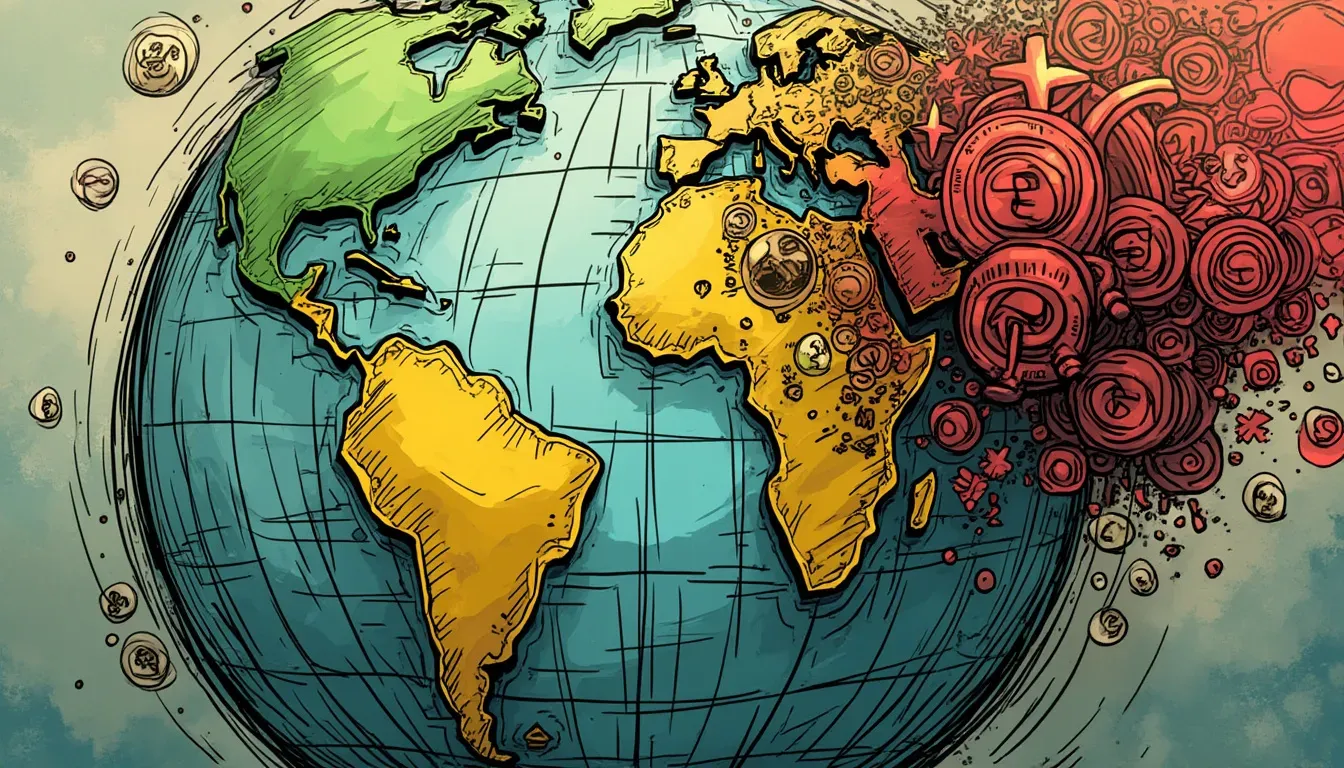Introduction
In the realm of global economics, the word "tariffs" has stirred a considerable amount of debate and discourse, particularly under the administration of President Donald Trump. Tariffs, often regarded as a financial burden, have curiously been described by Trump as "the most beautiful word" in the dictionary. This proclamation hints at a larger strategic vision for the United States—a reimagining of international economic relations that could redefine the global economic order.
Recent actions of the Trump administration indicate a deliberate, albeit contentious, use of tariffs to launch a broader economic revolution. The sweeping impact of these tariffs is a calculated effort aimed at redistributing the balance of global trade power towards the United States. This article aims to dissect Trump's tariff strategy, exploring the motivations behind it, its historical precedents, and the potential implications for the future global order.
The Strategy Behind the Chaos
The chaotic nature of Trump's tariff strategy is not random; it is a calculated move to disrupt and reshape global economic systems.
To understand Trump’s use of tariffs, it’s essential to delve into the underlying strategy as articulated by Scott Besant, Trump’s Treasury Secretary. The tariff impositions are not just about protecting American industries in the short term but are part of a longer-term strategy to upend the existing global trading system. This system, notably engineered and sustained by the United States, is seen by Trump's advisors as having outlived its usefulness to the American economy.
The current trade policy appears to echo historical economic shifts such as those precipitated by the Bretton Woods Agreement of 1944 and the neoliberal reforms of the 1980s spearheaded by Ronald Reagan and Margaret Thatcher. Both instances marked significant changes in how countries conducted international trade and cooperation.
Historical Context: Bretton Woods and Neoliberal Order
The Bretton Woods System established a framework for financial and economic cooperation post-World War II, tying other nations' currencies to the US dollar and subsequently stabilizing global economics. In return, these nations received US military protection and economic aid. However, this system saw its demise when President Nixon unpegged the dollar from gold in 1971, leading to a new era characterized by more flexible exchange rates and a US-centric global economic order.
This neoliberal order, which saw lower tariffs and greater movement of capital, was disrupted by profound economic shifts in the 2000s, notably the rise of China as a manufacturing powerhouse. This era has culminated in increasing calls for a reevaluation of US economic strategies, with a focus on reindustrialization and addressing trade deficits.
The MAGA Master Plan: A New Economic Vision
Step 1: Tariff Impositions as Leverage
The initial phase of Trump's strategy involves using tariffs as a bargaining tool, creating chaos intended to generate negotiating leverage. Scott Besant has indicated that despite initial skepticism, tariffs have now become an indispensable element in US trade negotiations. The chaos reflects more than mere protectionism—it signals a deeper, strategic move to realign global trade in favor of US interests.
Step 2: Creating a Reciprocal Tariff System
This phase envisages the establishment of reciprocal tariffs aiming for a level playing field. By matching tariffs imposed by trade partners, the US seeks to mitigate adverse competitive disadvantages. The underlying goal here is not only to benefit American industries but to encourage adherence to fair trading practices globally, such as respecting intellectual property rights and minimizing non-tariff barriers.
Step 3: The Mar-a-Lago Accord
Here lies the most ambitious part of the strategy: reintroducing a system reminiscent of Bretton Woods, without tying the dollar to gold but maintaining its primacy as the global reserve currency. Green countries would be encouraged to peg their currencies to the dollar, effectively re-subordinating their economies to US interests. This step would entail significant US military and economic support, albeit with expectations of reciprocity—in effect turning these nations into what could be perceived as "vassal states."
Challenges and Feasibility
While bold, the plan is not without its risks and criticisms. Many economists argue that the dual objectives of maintaining the dollar's reserve status while reindustrializing the economy are incompatible. The potential for global trade wars, akin to those in the 1930s, presents an ongoing threat to international stability. Moreover, achieving such a comprehensive overhaul of international trade requires a level of global trust that the US’s current aggressive stance may erode.
"In a rapidly changing world, the greatest risk is not taking any risks at all." — Mark Zuckerberg
The prospects of unilateral agreements like a Mar-a-Lago Accord require extraordinary diplomatic finesse and economic incentives that align with global interests. While Trump's team appears confident in US leverage, particularly given the dollar's entrenched global role, the challenge lies in convincing other nations to agree to terms that resonate with America-first policies.
Conclusion
Trump’s tariff strategy is undoubtedly a gamble, aiming to reestablish American economic preeminence in a rapidly evolving international landscape. While based on historical precedent, the proposed shift relies heavily on America’s ability to incentivize cooperation among other nations. Whether this vision for a new global order can be realized depends on the administration's capacity to navigate both domestic challenges and the intricate dynamics of international diplomacy. The future remains uncertain, but what is clear is that the era of passive trading partnerships has given way to active and often disruptive economic strategies.
Trump’s actions may set the stage for either a new era of US-led global prosperity or an escalation of economic and diplomatic tensions with uncertain outcomes. As the world watches, the unfolding drama of tariffs and trade wars continues to shape the international economic order in unforeseen ways.
YOUTUBE, MAGA MASTER PLAN, TRADE WARS, BRETTON WOODS, NEOLIBERALISM, DEINDUSTRIALIZATION, US ECONOMY, TARIFFS, GLOBAL ECONOMICS, GLOBAL ORDER, TRUMP

